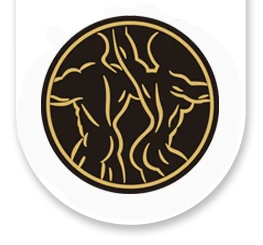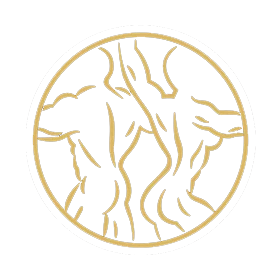Intravenous High-Dose Vitamin C in Cancer Therapy in Sarasota FL

January 24, 2020, by Lewis Cantley and Jihye Yun
Lewis Cantley received his Ph.D. from Cornell University and did his post-doctoral work at Harvard University. He was formerly a professor in the Departments of Systems Biology and Medicine at Harvard Medical School in Boston. He is current the Meyer Director and Professor of Cancer Biology at the Sandra and Edward Meyer Cancer Center at Weill Cornell Medicine in New York City. Jihye Yun received her Ph.D. from Johns Hopkins University, School of Medicine under the mentorship of Bert Vogelstein and did her post-doctoral work with Lewis Cantley at Weill Cornell Medicine. She is currently an Assistant Professor and a CPRIT scholar at Baylor College of Medicine in Houston.
The discovery and isolation of vitamin C was one of the most important advances in improving human nutrition. Scurvy, a severe vitamin C deficiency disease characterized by weakness, lethargy, easy bruising and bleeding, was particularly problematic for sailors on long voyages during the 16th century, where access to fresh fruits and vegetables was limited. In fact, scurvy was the leading cause of naval deaths between the 16th and 18th centuries, killing more sailors than all battles, storms and other diseases combined. It wasn’t until 1747 that Scottish naval physician James LindExit Disclaimer demonstrated that consuming oranges and lemons cured and prevented scurvy. However, it took scientists nearly two more centuries to identify the nature of the curative substance contained in citrus fruits, now commonly known as vitamin C. The search for this elusive substance ended in 1932 when Albert Szent-GyorgyiExit Disclaimer, a Hungarian biochemist, isolated and identified a 6-carbon carbohydrate, hexuronic acid, as the anti-scurvy factor. Shortly thereafter, Szent-Gyorgyi renamed it “ascorbic acid”, a reference to its anti-scorbutic properties, and later went on to receive the Nobel Prize in Physiology and Medicine in 1937 for his discoveries.
Today vitamin C is a popular dietary supplement, and due to improved accessibility to fruits, vegetables and vitamin supplements, disability and death from scurvy are rare. However, it is worth noting that a significant number of people even in developed countries are still vitamin C deficient. For example, approximately 7% of the US population has a plasma vitamin C concentration of less than 11 μM, that is considered scurvy. Vitamin C has many essential functions in our body in addition to its well-known role as an antioxidant. Thus, prolonged periods of sub-optimal vitamin C exposure could have adverse health effects, including an increased susceptibility to a plethora of diseases. In fact, the optimal dosage of vitamin C required to maximize its health benefits has been hotly debated ever since its discovery a century ago. Linus Pauling, a world-renowned chemist and two-time Nobel Prize Laureate, strongly advocated that megadose quantities of vitamin C (above 1 g intake per day) would prevent and treat many illnesses including the common cold and heart diseases. However, mainstream medicine has largely ignored or even ridiculed Pauling’s claim. This controversy is still very much alive today.
The controversial history of high-dose vitamin C in cancer treatment
Utilizing high doses of vitamin C as a cancer therapy is no exception to this controversy. Nearly 60 years ago Toronto physician William McCormick observed that cancer patients often presented with severely low levels of vitamin C in their blood and featured scurvy-like symptoms, leading him to postulate that vitamin C might protect against cancer by increasing collagen synthesis. In 1972, extending this theory, Ewan Cameron, a Scottish surgeon, hypothesized that ascorbate could suppress cancer development by inhibiting hyaluronidase, which otherwise weakens the extracellular matrix and enables cancer to metastasize. He began treating terminally ill cancer patients and published a case report of 50 patients in which some of the treated patients benefited from high dose vitamin C.
Encouraged by the result, Cameron teamed up with Linus Pauling to conduct clinical trials involving terminal cancer patients. In 1976, they published a study of 100 patients with terminal cancer treated with ascorbate. Their disease progression and survival rates were compared to 1000 retrospective control patients who were matched with the vitamin C-treated patients regarding age, sex, type of cancer and clinical stage and who were treated by the same physicians in the same hospital, and in the same way except that they did not receive vitamin C. Although the study was not well designed by modern standards, mainly because they lacked the placebo-control group, the results demonstrated that patients treated with vitamin C had improved quality of life and a four-fold increase in their mean survival time. In a follow up study, Cameron and Pauling reported that 22% of vitamin C-treated cancer patients survived for more than one year compared to only 0.4% of control patients. A clinical trial in Japan independently showed a similar result. With these promising outcomes, interest in the potential of vitamin C for cancer therapy grew. However, double-blind randomized clinical trials directed by Charles Moertel of the Mayo Clinic failed to show any positive effects of high dose vitamin C in cancer patients, as reported in two papers in the journal of New England Journal of Medicine. Because the Mayo Clinic’s clinical trials were conducted more rigorously, people trusted the Mayo Clinic’s data and discredited the Cameron-Pauling trials, dampening the enthusiasm for vitamin C as a cancer therapy.
So why did the Pauling and Mayo Clinic trials have different results? There are at least two crucial differences. First, the Mayo Clinic trials abruptly stopped the ascorbate administration, switching to traditional chemotherapy, when the patient developed signs of tumor progression. Thus, the overall median time of vitamin C treatment under the Mayo Clinic trials was only 2.5 months, while the Pauling and Cameron trials treated patients for the duration of the entire study period or as long as 12 years. Secondly, the Mayo Clinic trials administered 10 g of daily ascorbate to patients only orally, while the Cameron and Pauling trials administered their vitamin C both orally and intravenously. This difference in the two dosage routes proved highly consequential.
Rekindling vitamin C cancer therapy: oral vs intravenous administration
Based on studies pioneered by Mark Levine’s group at the NIH in the 2000s, the oral vitamin C doses used in the Mayo Clinic studies would have produced peak plasma concentration of less than 200 μM. In contrast, the same dose given intravenously, as used in the Pauling studies, would produce peak plasma concentrations of nearly 6 mM, more than 25 times higher. When given orally, vitamin C concentration in human plasma is tightly controlled by multiple mechanisms acting together: intestinal absorption, tissue accumulation, renal reabsorption and excretion, and potentially even the rate of utilization. However, when ascorbate is administered intravenously or intraperitoneally the tight controls are bypassed, and pharmacologic millimolar plasma concentrations of vitamin C can easily be achieved. For example, a phase I clinical study revealed that ascorbate concentrations could safely reach 25-30 mM with intravenous infusion of 100 g of vitamin C. In this study, plasma concentrations around 10 mM were sustained for at least 4 hours which, based on preclinical studies, is sufficient to kill cancer cells. Given the fact that cancer patients were only treated with vitamin C orally in the Mayo Clinic studies, the studies do not disprove high dose vitamin C’s efficacy as a cancer treatment.
This new knowledge has rekindled interest and spurred new research into the clinical potential of vitamin C. Consequently, over the past decade, there have been an increased number of phase I/II clinical trials and case reports testing the safety and efficacy of high dose vitamin C as a treatment for various cancer patients as a monotherapy or in combinational therapy. We will not discuss these clinical studies as there are already several reviews on the topic. Virtually all studies show improved quality of life for cancer patients by minimizing pain and protecting normal tissues from toxicity caused by chemotherapy. Additionally, vitamin C showed synergistic effects when combined with radiation and standard chemotherapies. Unfortunately, these studies were not designed as large-scale, randomized controlled trials and thus the efficacy of high dose vitamin C therapy remains to be determined.
Challenges of conducting a randomized controlled trial for vitamin C cancer therapy
There are at least three challenges that have thus far prevented large-scale, randomized controlled trials of vitamin C for cancer therapy. First, vitamin C is not patentable. Therefore, there is no financial incentive for pharmaceutical companies to support vitamin C clinical trials, and those that have been done have largely relied on government grants and small private donations. Second, as discussed above, vitamin C cancer therapy has a long history of controversy. Due to the Mayo clinical studies in the 1980s, many orthodox, mainstream clinicians have a prejudice against vitamin C therapy. Third, although many preclinical studies showed high dose vitamin C could kill cancer cells or retard tumor growth in vivo, vitamin C’s mechanisms of action have not been clear, making it hard to predict the pharmacodynamics, the rational design of combinational therapy, and biomarkers for patient stratification. Fortunately, a growing number of recent and rigorous preclinical studies have begun resolving the third challenge, which may also lead to overcoming the first and second barriers. Mechanistic insights into the action of pharmacological vitamin C will generate more explicit scientific hypotheses and allow clinicians to design better trials to investigate those hypotheses, ultimately leading to a definitive answer to the question: can the pharmacological administration of ascorbate benefit cancer patients? Recently, we discussed the potential mechanisms by which vitamin C may act in cancer patients in Nature Reviews Cancer. Here we will highlight one of the mechanisms discovered by our group that relates to Ras protein.
High-dose vitamin C therapy for KRAS/BRAF mutant cancers
More than 80 years ago, the biochemist Otto Warburg observed that cancer cells consume more glucose and produce more lactate even in the presence of ample oxygen as compared with normal cells. This phenomenon, called aerobic glycolysis or the Warburg effect, has been exploited for visualizing tumors in the clinical setting by imaging their uptake of the radiolabeled glucose analog, [18F] fluoro-2-deoxyglucose (FDG), via Positron Emission Tomography (PET). Although the exact mechanism by which glucose reprograming contributes to tumorigenesis remains unclear, numerous genetic and pharmacological studies showed that this metabolic switch can be essential for cancer survival and proliferation. Thus, targeting glycolysis may offer cancer patients a more selective strategy to treat cancer.
More than half of colorectal cancers (CRCs) harbor activating mutations in KRAS or BRAF, yet those cancers are the most refractory to current targeted therapies. Our group and others showed that oncogenic mutations in KRAS or BRAF contribute to the Warburg effect and the addiction to glucose in part by upregulating a glucose transporter, GLUT1, that allows cancer cells to take up glucose efficiently. These data suggest a strategy for targeting KRAS or BRAF mutant cancer by exploiting the selective expression of GLUT1 and the metabolic liability that comes with increased reliance on glycolysis. Indeed, by targeting these unique features in these cancer cells, we recently showed that high dose vitamin C could selectively kill KRAS or BRAF mutant CRC cells.
Interestingly, GLUT1 not only transports glucose but also transports dehydroascorbic acid (DHA), the oxidized form of vitamin C. Subsequently, we observed that CRC cells harboring KRAS or BRAF mutations uniquely increased uptake of DHA via GLUT1 when treated with vitamin C. The increased DHA uptake in mutant cells produced oxidative stress, increasing the level of reactive oxygen species (ROS) in cells because intracellular DHA was rapidly reduced back to vitamin C at the expense of glutathione (GSH), a master antioxidant in cells. In turn, we found that elevated ROS activated poly (ADP-ribose) polymerase (PARP), a DNA repair enzyme, consuming large amounts of cellular NAD+ as its cofactor. The depletion of NAD+ resulted in the inactivation of glyceraldehyde 3-phosphate dehydrogenase (GAPDH) because GAPDH requires NAD+ as a cofactor. Inhibiting GAPDH in highly glycolytic KRAS or BRAF mutant cells ultimately led to an energy crisis and cell death not seen in their KRAS and BRAF wild-type counterparts. Finally, we showed that high-dose vitamin C therapy reduced both the number and size of tumors in KRAS or BRAF mutant mice as compared to mice without these mutations, confirming that vitamin C selectively targets KRAS or BRAF mutant tumors in mouse models of colon tumors. In short, ascorbate functions as a “Trojan horse” through its conversion to DHA, and insidiously enters cancer cells via GLUT1 to promote the generation of intracellular ROS, which ultimately kills the cancer cell.
Although our study showed that DHA is the pharmaceutically active agent, reduced ascorbate (not directly DHA) is used for preclinical and clinical anti-cancer studies because ascorbate has a significantly longer plasma half-life than DHA (andgt;60 min vs a few min). Moreover, the reduced ascorbate can be efficiently oxidized to DHA in tumors’ extracellular fluids where high level of ROS usually exists. Given that KRAS and BRAF mutations are not only restricted to colorectal cancer, vitamin C may be benefit other types of tumors. For example, 90% of pancreatic cancers and approximately 30% of lung cancers have KRAS mutations. These KRAS mutant tumors also have high GLUT1 expression and are linked to altered glucose metabolism similar to CRC. Therefore, high dose vitamin C may benefit other types of tumors harboring KRAS/BRAF mutations. Based on these results, Weill Cornell Medicine is currently conducting a Phase II clinical trial to examine the effects of intravenous high-dose vitamin C in the treatment of KRAS-mutant cancers, and Sun Yat-sen University Cancer Center in China is conducting placebo-controlled, randomized Phase III clinical trials in colorectal cancer patients in a combination of chemotherapy.
While KRAS and BRAF mutations are certainly two of the most frequently mutated oncogenes in human cancer, they are not the only mutations known to affect glucose metabolism and sensitivity toward ascorbate therapy. For example, we and others have found that renal cancer cells (RCC) with loss of VHL (Von Hippel- Lindau), a tumor suppressor that destabilizes HIF1A via ubiquitination, are significantly sensitive to ascorbate treatment compared to VHL-proficient cells. RCC-VHL null cells have increased HIF1A transcriptional activity, which not only increases GLUT1 expression, but also deregulates many other glycolytic enzymes to induce metabolic reprograming. Additionally, cancers with increased levels of DNA damage, such as those that have been treated with radiation or those with mutations in BRCA genes, are more reliant on DNA repair mediated by PARP. Pharmacologic vitamin C might selectively impair such cancers by depriving them of the NAD+ necessary for PARP activity.
Concluding Remarks
Vitamin C as a cancer therapy has had a controversial past. What has been intriguing are small clinical trials that suggest some responses, but with no clear rationale for why cancers should respond to vitamin C or a path forward for explaining which patients are most likely to respond. Now a growing number of preclinical studies are showing how high-dose vitamin C might benefit cancer patients. Importantly, these preclinical studies provide a clear rationale and potential biomarkers that may help personalize the therapeutic approach and identify patient populations that are likely to respond to high-dose vitamin C therapy. Since the mechanisms of action of vitamin C are becoming better defined, we can propose vitamin C combinations in a more rational, hypothesis-driven manner. In addition, given the current high financial cost of new cancer drugs, it seems rational to improve the effectiveness of current therapies by studying their clinical interactions with vitamin C. In our view, the implementation of this treatment paradigm could provide benefit to many cancer patients.
Acknowledgements
This work was supported by the US National Institutes of Health (NIH) grant (R35 CA197588), Stand Up to Cancer–American Association for Cancer Research grant (SU2C-AACR-DT22-17), and the Damon Runyon Cancer Research Foundation. Lewis Cantley is a founder and member of the senior advisory boards of Agios Pharmaceuticals and Petra Pharmaceuticals, which are developing novel therapies for cancer. The Cantley laboratory also receives financial support from Petra Pharmaceuticals.
If you would like to reproduce some or all of this content, see Reuse of NCI Information for guidance about copyright and permissions. In the case of permitted digital reproduction, please credit the National Cancer Institute as the source and link to the original NCI product using the original product’s title; e.g., “Intravenous High-Dose Vitamin C in Cancer Therapy was originally published by the National Cancer Institute.”
OFFICE HOURS
Monday
10:00am - 5:00pm
Tuesday
10:00am - 5:00pm
Wednesday
10:00am - 5:00pm
Thursday
10:00am - 5:00pm
Friday
10:00am - 4:00pm
Saturday and Sunday
Closed
Age Reversal Technology Center
6968 Professional Pkwy E
Sarasota, FL 34240




